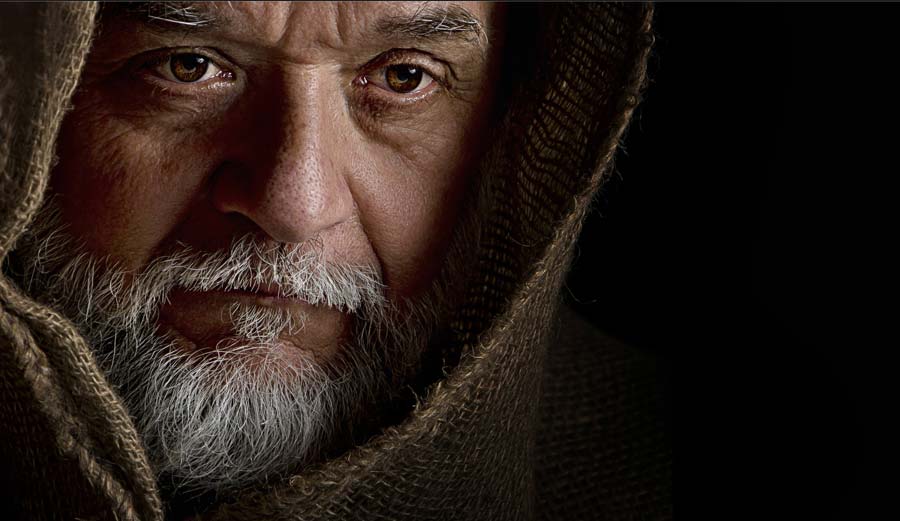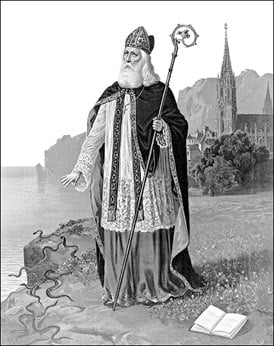You are using an out of date browser. It may not display this or other websites correctly.
You should upgrade or use an alternative browser.
You should upgrade or use an alternative browser.
Happy St. Patrick's Day
- Thread starter aloyouis
- Start date
Roberto71
Well-known member
Happy St. Patricks Day to all my Irish brothers and sisters in the US and beyond!
- Joined
- Apr 9, 2005
- Messages
- 41,404
- Reaction score
- 13,201
- Points
- 113
- Age
- 76
Top of the morning to you.Happy St. Patricks Day to all my Irish brothers and sisters in the US and beyond!
Thank you and the same to you. Guinness is good for you. Have an extra one for me.
Cheers
aloyouis
at least generally aware
Funny. The wife and I honeymooned in Ireland and the Guinness is good for and others Guinness signs where everywhere.Top of the morning to you.
Thank you and the same to you. Guinness is good for you. Have an extra one for me.
Cheers
Roberto71
Well-known member
My wife gives Guinness to the horses we have and they bloody love it. We put it in with their oats and feed and their coats are gleaming.
3 Point Stan
POW! Right in the kissah.
Sláinte
Good fortune to you all on this fine day! 
Happy St. Patrick's Day, Planeteers!


- Joined
- Jul 6, 2005
- Messages
- 23,365
- Reaction score
- 4,784
- Points
- 113
- Location
- Circumlocuting around New England...

Sent from my iPhone using Tapatalk Pro

Sent from my iPhone using Tapatalk Pro
Did Romans drink green beer?
aloyouis
at least generally aware
do dheagh shlàinte.Sláinte


Saint Patrick: When the True Story is More Exciting than the Legend
The 17th March marks Saint Patrick’s Day, or the Feast of Saint Patrick, a cultural and religious holiday celebrated every year in Ireland and by Irish communities around the world.
 www.ancient-origins.net
www.ancient-origins.net

Saint Patrick: When the True Story is More Exciting than the Legend
The 17th March marks Saint Patrick’s Day, or the Feast of Saint Patrick, a cultural and religious holiday celebrated every year in Ireland and by Irish communities around the world.
Saint Patrick: When the True Story is More Exciting than the Legend
The 17 th March marks Saint Patrick’s Day, or the Feast of Saint Patrick, a cultural and religious holiday celebrated every year in Ireland and by Irish communities around the world. The celebration marks the anniversary of Saint Patrick’s death in the fifth century and represents the arrival of Christianity in the country. The Irish have observed this day as a holiday for over 1,000 years, and while the festival began as a religious feast day for the patron saint of Ireland, today it has become an international celebration of Irish culture.
The Legendary St Patrick
In the 1,600 years since Saint Patrick preached his way across the Emerald Isle, the legends and folk stories surrounding his life have become ever more ingrained in the Irish culture. He is credited with expelling all snakes from Ireland and using a shamrock – a three-leaf clover – to explain the Holy Trinity to the Pagan Irish. Stories of expelling demons and engaging in duels with the powerful Druids have been passed down over generations, but in many ways, the true facts of Patrick’s life are even more dramatic than the tales.Patrick was born into a wealthy family in Roman Britannia in 385 AD and originally carried the name Maewyn Succat. He lived a relatively peaceful existence until the age of 16, when he was torn from his home by Irish pirates and taken as a slave. He was sold to a local chieftain in Ireland named Miliue of Antrim and was forced to herd sheep and swine for six years, bitterly isolated and poorly clothed for the harsh winters.
In Saint Patrick’s Confessio, he reflected on the reason for these events:
It was during this time as a slave that Patrick turned to religion and pleaded to God for a way to escape his hell. Finally, his answers came in the form of a vision, in which he was told to flee to the coast, where a ship would be waiting to take him home. Patrick made a break for it and travelled through 185 miles of wilderness to the shoreline. Just as he had dreamed, a British ship stood waiting. Patrick boarded the ship and went home.“At that time, I did not know the true God. I was taken into captivity in Ireland, along with thousands of others. We deserved this, because we had gone away from God, and did not keep his commandments. We would not listen to our priests, who advised us about how we could be saved. The Lord brought his strong anger upon us and scattered us among many nations even to the ends of the earth. It was among foreigners that it was seen how little I was.”
He hadn’t been home long before another vision came to him. This time, he dreamed that the people of Ireland were beckoning him to come and bring them Christianity. He describes the vision in his memoir:
"I saw a man coming, as it were from Ireland. His name was Victoricus, and he carried many letters, and he gave me one of them. I read the heading: 'The Voice of the Irish.' As I began the letter, I imagined in that moment that I heard the voice of those very people who were near the wood of Foclut, which is beside the western sea-and they cried out, as with one voice: 'We appeal to you, holy servant boy, to come and walk among us’.”
The vision prompted Patrick to train for priesthood. He travelled to Gaul, where after many years of study, he was ordained by St Germanus, the Bishop of Auxerre, and sent to take the Gospel to Ireland. He arrived in Slane, Ireland on March 25, 433 AD and began his mission.
Pagan-Christian Fusion
Patrick’s goal of seeing Pagan Ireland converted did not sit well with the locals at first. It is recorded in the Annals of the Kingdom of Ireland that he was temporarily imprisoned, and several attempts were made on his life. Patrick took to carrying a dagger.However, Patrick found a method that would eventually succeed, enabling him to convert the Irish without either sword or army. As well as working to build alliances with local leaders, he popularized the faith by harnessing the knowledge he had gained of the native language, culture and religion during his time in slavery, and using this to merge Irish lore and celebrations with Christianity.
He moved the dates of early Christian celebrations to dates that were sacred to the Pagans and merged Christian symbols with Pagan ones so that the new religion could be more easily assimilated. An 18 th century historical account records that Saint Patrick used the shamrock, a three-leaf clover, to explain the Holy Trinity. In Pagan Ireland, three was a significant number and the Irish had many triple deities. The triple spiral symbol, or Triskelion, appears at many ancient megalithic and Neolithic sites in Ireland.
As stated in the Annals of the Kingdom of Ireland:
“Nothing is clearer than that Patrick engrafted Christianity on the Pagan superstitions with so much skill, that he won the people over to the Christian religion before they understood the exact difference between the two systems of belief.”
Saint Patrick established the first church at a place called Saul, in Northern Ireland, and after that he planted more and more churches as he crisscrossed his way through Ireland. The Annals of the Kingdom of Ireland record that:
“It was by him that many cells, monasteries, and churches were erected throughout Ireland; seven hundred churches was their number. It was by him that bishops, priests, and persons of every dignity were ordained; seven hundred bishops, and three thousand priests [was] their number.”
In just a few decades, Saint Patrick had converted all of Ireland to Christianity.
Banishes the Snakes from Ireland
One of the most famous legends Saint Patrick is associated with his supposed banishing of all snakes from Ireland. According to the story, Patrick drove snakes into the sea after they attacked him during a 40-day fast that he was undertaking on top of a hill.However, post-glacial Ireland never had snakes. Water has surrounded Ireland since the end of the last glacial period, preventing snakes from slithering over; before that, it was blanketed in ice and too chilly for the cold-blooded creatures.
The legend of Saint Patrick and the snakes is rather an allegory for his eradication of Pagan ideology. When Patrick drives the snakes out of Ireland, it is symbolically saying that he cast out the old religion and brought in a new one.
Death and Legacy
Saint Patrick’s death is recorded in the Annals of the Kingdom of Ireland in the year 493 AD when he is said to have been 122 years old, although many historians believe he died in the year 461 AD.The date of his death was March 17, the day that is now celebrated in Ireland and around the world as Saint Patrick’s Day.
Not everyone in Ireland feels affection towards Saint Patrick. His conversion of the Irish resulted in the abandonment of thousands of years of tradition, culture and beliefs that had been held by the Irish people and magnificent megalithic sites that had been constructed with immense effort and served as centers of ritual and celebration fell out of use.
Nevertheless, there is much that he can be credited for and his legacy remains very much alive today throughout Ireland and among the millions of Irish diaspora across the world.
“The monasteries he founded or encouraged became centres of literacy and learning, sprawling universities devoted to knowledge, which would in time serve to collect and preserve the written record of western civilization after the fall of Rome”, writes Professor of Philosophy Joshua J Marck . “The Roman Empire had never invaded Ireland and so the land was relatively unaffected by its fall. In the Christian monasteries of Ireland, the great written works of the past were copied and preserved for future generations. Through his vision and mission, St. Patrick changed not only Ireland, but the world.”
- Joined
- Apr 9, 2005
- Messages
- 41,404
- Reaction score
- 13,201
- Points
- 113
- Age
- 76
Good read.

Saint Patrick: When the True Story is More Exciting than the Legend
The 17th March marks Saint Patrick’s Day, or the Feast of Saint Patrick, a cultural and religious holiday celebrated every year in Ireland and by Irish communities around the world.www.ancient-origins.net
Saint Patrick: When the True Story is More Exciting than the Legend
The 17 th March marks Saint Patrick’s Day, or the Feast of Saint Patrick, a cultural and religious holiday celebrated every year in Ireland and by Irish communities around the world. The celebration marks the anniversary of Saint Patrick’s death in the fifth century and represents the arrival of Christianity in the country. The Irish have observed this day as a holiday for over 1,000 years, and while the festival began as a religious feast day for the patron saint of Ireland, today it has become an international celebration of Irish culture.
The Legendary St Patrick
In the 1,600 years since Saint Patrick preached his way across the Emerald Isle, the legends and folk stories surrounding his life have become ever more ingrained in the Irish culture. He is credited with expelling all snakes from Ireland and using a shamrock – a three-leaf clover – to explain the Holy Trinity to the Pagan Irish. Stories of expelling demons and engaging in duels with the powerful Druids have been passed down over generations, but in many ways, the true facts of Patrick’s life are even more dramatic than the tales.
Patrick was born into a wealthy family in Roman Britannia in 385 AD and originally carried the name Maewyn Succat. He lived a relatively peaceful existence until the age of 16, when he was torn from his home by Irish pirates and taken as a slave. He was sold to a local chieftain in Ireland named Miliue of Antrim and was forced to herd sheep and swine for six years, bitterly isolated and poorly clothed for the harsh winters.
In Saint Patrick’s Confessio, he reflected on the reason for these events:
It was during this time as a slave that Patrick turned to religion and pleaded to God for a way to escape his hell. Finally, his answers came in the form of a vision, in which he was told to flee to the coast, where a ship would be waiting to take him home. Patrick made a break for it and travelled through 185 miles of wilderness to the shoreline. Just as he had dreamed, a British ship stood waiting. Patrick boarded the ship and went home.
He hadn’t been home long before another vision came to him. This time, he dreamed that the people of Ireland were beckoning him to come and bring them Christianity. He describes the vision in his memoir:
"I saw a man coming, as it were from Ireland. His name was Victoricus, and he carried many letters, and he gave me one of them. I read the heading: 'The Voice of the Irish.' As I began the letter, I imagined in that moment that I heard the voice of those very people who were near the wood of Foclut, which is beside the western sea-and they cried out, as with one voice: 'We appeal to you, holy servant boy, to come and walk among us’.”
The vision prompted Patrick to train for priesthood. He travelled to Gaul, where after many years of study, he was ordained by St Germanus, the Bishop of Auxerre, and sent to take the Gospel to Ireland. He arrived in Slane, Ireland on March 25, 433 AD and began his mission.
Pagan-Christian Fusion
Patrick’s goal of seeing Pagan Ireland converted did not sit well with the locals at first. It is recorded in the Annals of the Kingdom of Ireland that he was temporarily imprisoned, and several attempts were made on his life. Patrick took to carrying a dagger.
However, Patrick found a method that would eventually succeed, enabling him to convert the Irish without either sword or army. As well as working to build alliances with local leaders, he popularized the faith by harnessing the knowledge he had gained of the native language, culture and religion during his time in slavery, and using this to merge Irish lore and celebrations with Christianity.
He moved the dates of early Christian celebrations to dates that were sacred to the Pagans and merged Christian symbols with Pagan ones so that the new religion could be more easily assimilated. An 18 th century historical account records that Saint Patrick used the shamrock, a three-leaf clover, to explain the Holy Trinity. In Pagan Ireland, three was a significant number and the Irish had many triple deities. The triple spiral symbol, or Triskelion, appears at many ancient megalithic and Neolithic sites in Ireland.
As stated in the Annals of the Kingdom of Ireland:
“Nothing is clearer than that Patrick engrafted Christianity on the Pagan superstitions with so much skill, that he won the people over to the Christian religion before they understood the exact difference between the two systems of belief.”
Saint Patrick established the first church at a place called Saul, in Northern Ireland, and after that he planted more and more churches as he crisscrossed his way through Ireland. The Annals of the Kingdom of Ireland record that:
“It was by him that many cells, monasteries, and churches were erected throughout Ireland; seven hundred churches was their number. It was by him that bishops, priests, and persons of every dignity were ordained; seven hundred bishops, and three thousand priests [was] their number.”
In just a few decades, Saint Patrick had converted all of Ireland to Christianity.
Banishes the Snakes from Ireland
One of the most famous legends Saint Patrick is associated with his supposed banishing of all snakes from Ireland. According to the story, Patrick drove snakes into the sea after they attacked him during a 40-day fast that he was undertaking on top of a hill.
However, post-glacial Ireland never had snakes. Water has surrounded Ireland since the end of the last glacial period, preventing snakes from slithering over; before that, it was blanketed in ice and too chilly for the cold-blooded creatures.
The legend of Saint Patrick and the snakes is rather an allegory for his eradication of Pagan ideology. When Patrick drives the snakes out of Ireland, it is symbolically saying that he cast out the old religion and brought in a new one.
Death and Legacy
Saint Patrick’s death is recorded in the Annals of the Kingdom of Ireland in the year 493 AD when he is said to have been 122 years old, although many historians believe he died in the year 461 AD.
The date of his death was March 17, the day that is now celebrated in Ireland and around the world as Saint Patrick’s Day.
Not everyone in Ireland feels affection towards Saint Patrick. His conversion of the Irish resulted in the abandonment of thousands of years of tradition, culture and beliefs that had been held by the Irish people and magnificent megalithic sites that had been constructed with immense effort and served as centers of ritual and celebration fell out of use.
Nevertheless, there is much that he can be credited for and his legacy remains very much alive today throughout Ireland and among the millions of Irish diaspora across the world.
How the Irish Saved Civilization
Book by Thomas CahillCheers
Roberto71
Well-known member
Good points all!








